Best SCISSORS? 14 Brands
Brands: KAI, Gingher, Heritage, Klein Tools, Henckels, Fiskars, Bianco, Ultima Classic, Westscott, Livingo, KitchenAid, Singer, Scotch, Stanley. Scissors tested for sharpness and durability after cutting through 1,000 feet of paper, 20 passes through cardboard, ten passes through aluminum sheeting, and ten passes through cardboard.
Short Story
| The Best | Cheaper but still Good | Good but slightly more expensive | Sharp but won’t last |
|---|---|---|---|
 |  |  |  |
| KAI | KitchenAid | Fiskars | Klein Heritage |
Long Story
Lots of requests to test scissors. And I use scissors about every day. So the question is, is that $3 pair of scissors, just as good as the pair, cost $73? Let us find out. In the first test, we’ll test the sharpness of the scissors.
After they cut through paper, the length of three football fields, we’ll test the edge after cutting through cardboard. We’ll see if cutting aluminum sharpens the scissors. Then we’ll see which brand is best after cutting through sandpaper. Finally, we’ll sharpen some scissors after they become dull from all the testing.
At a price of only $3.50, each or $7 for the pair is this Stanley brand wear resistance stainless steel for long cutting life, home edge blade angle for smooth precise, cutting adjustable blade tension for tailored cutting preference, limited lifetime warranty, a honed edge for smooth, precise cutting.
We’re going to test that the Stanley brand is made in China. The Stanley scissors are very light at 92 grams. Let’s first compare the sharpness of the scissors to test the sharpness.
I’ll be using its best-certified sharpness tester and these test clips. A piece of test media is running from the left to the right side of the test clip as the edge of the scissor blade is pushing downward.
The scale will measure the downward force and grams applied to cut through the test media. The sharpness chart came with a tester, the double edge razor blades around 50, and a utility blade from 150 to 200. A new high-end cut edge is anywhere from 250 to 350.
Edges that need maintenance are around 400, and a butter knife is around 2000. The Stanley scissors cut 610, a little sharp at only $4.00, just 50 cents more than the Stanley, is a Scotch’s high-quality, durable stainless-steel blade handles designed for both left and right-hand users.
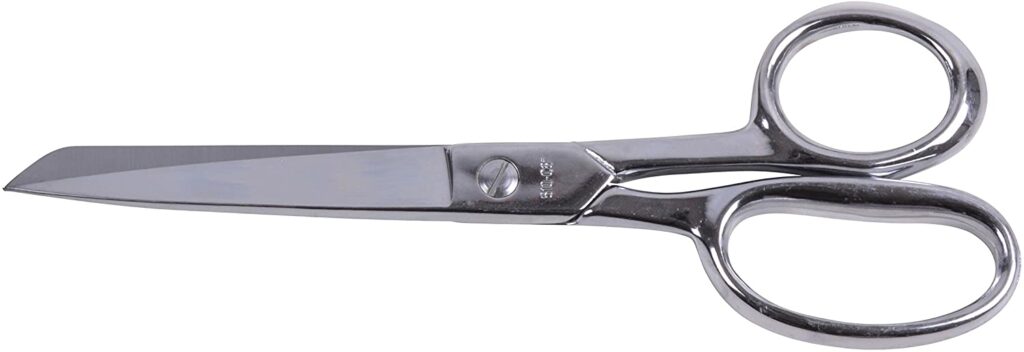
Smooth-cutting action. The Scotch scissors are made in China. The Scotch scissors weigh 77 grams. The Scotch scissors are 200-point sharper than the Stanley at 410 at $6 is a Singer brand. Even though these scissors are designed to cut fabric, we will also test some other things.
Right or left-handed use stainless steel blades and soft-grip handles. The Singer scissors are made in China. The Singer scissors weigh 67 grams. The Singer brand is sharper than the Stanley scissors but not quite as sharp as the Scotch at 560 at $9.
Is this KitchenAid brand premium stainless steel blades comfortable, software grip handle, and is dish pressure safe? The KitchenAid brand is made in China. The KitchenAid scissors are the heaviest yet at 122 grams. The KitchenAid brand is second behind the Scotch at 470 at $13.
Are there Livingo brand strong stainless steel rust-resistant blades? The forging press manufacturing process enables high-density steel, making it three times more complicated than standard stainless steel. It claims to be ultra-sharp. We’re going to test that the Livingo scissors are made in China.
The Livingo scissors weigh 109 grams, and the Livingo moves into the lead over the Scotch with a sharpness of 390. At $14 are this Westscott brand heavyweight, and durable traditional cast alloy handles with stainless steel blades.
The Westscott scissors are made in China. The Westscott scissors are by far the heaviest yet at 161 grams. The Westscott brand is nearly as sharp as the KitchenAid at 475 at $18.
Is this Acme brand high-performance forged steel, powerful shears, and nickel-plated blades? The Acme brand is made in Italy. The Acme scissors weigh 185 grams.
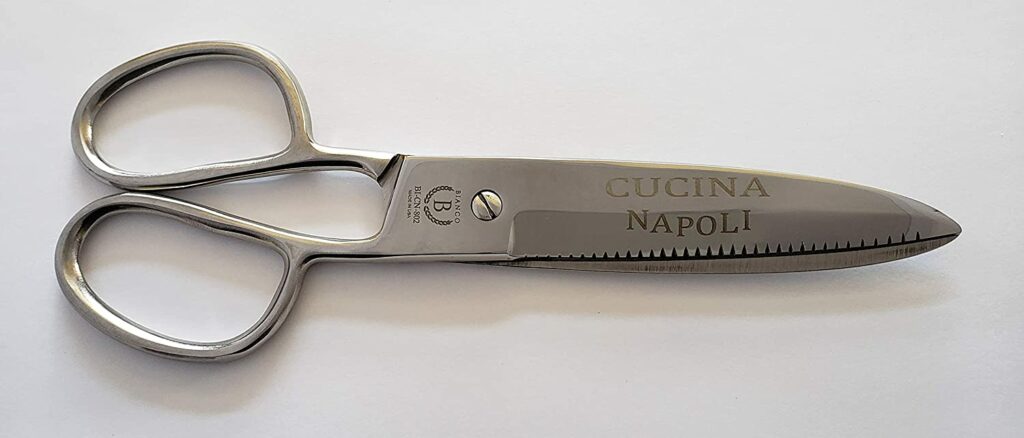
The Acme scissors have nearly the same sharpness as a Singer brand at 575 at $19. Is this Ultima classic ultra-sharp knife-edge ensuring easier, cleaner, and more precise cuts, hot forged, and fully plated, chrome-plated carbon steel shears provide a clean-cut and long-lasting edge?
The Ultima classics are made in Italy. The Ultima classics wear 195 grams. The Ultima classics are the same sharpness as a Scotch brand at 410 at $20. Is this Bianco brand and dispensable tool for the kitchen and around the house—all stainless steel construction and easy to clean?
The Bianco brand is made in the USA. The Bianco scissors weigh 130 grams. The Bianco scissors are near sharp as the Livingo scissors and move into the second position with a sharpness of 395 at $21.
Is this Fiskars brand ideal for cutting a wide variety of materials; hard and stainless-steel blades provide lasting durability blades ground to a razor edge to cut through heavy materials with less effort.
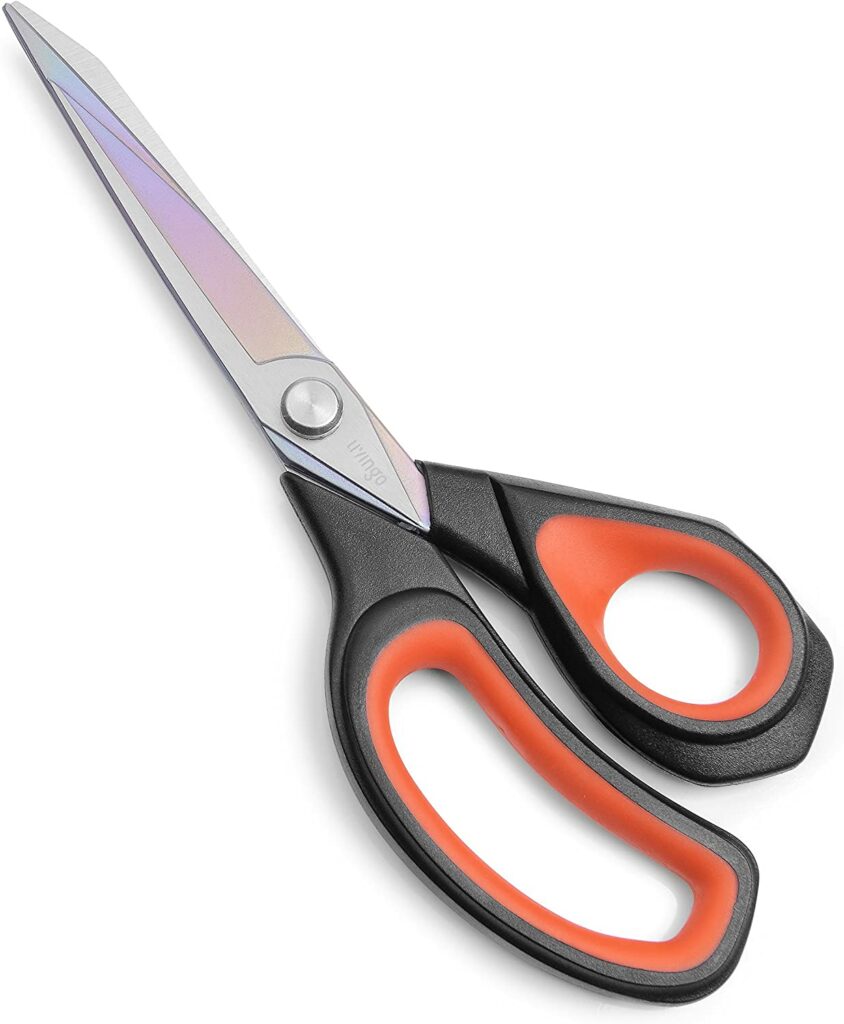
We’re going to test that. Soft grip handles reduce hand fatigue for comfortable and extended use. The Fiskars are made in China. The Fiskars weigh 126 grams. The Fiskars claim to be razor-sharp.
And they’re the sharpest scissor, yet at 355, at $22; this Zwilling J.A. Henckels brand is made with one straight and one rated blade to provide easy cutting. Polypropylene handles provide comfort and have a built-in rotary that loosens stiff lids, cutting-edge technology with Zwilling.
Those Zwilling scissors are made in Germany. Those Zwilling scissors weigh 91 grams. The Henckels brand is quite a bit sharper than average at 395. At $24, this Klein Tools brand is used in various industries, including textiles, floral landscaping, embroidery, sewing, poultry, hair styling, pet grooming, electronics, fiber optics, electrical, and industrial.
The Klein Tools is made in the USA. The Klein Tools weigh 167 grams.
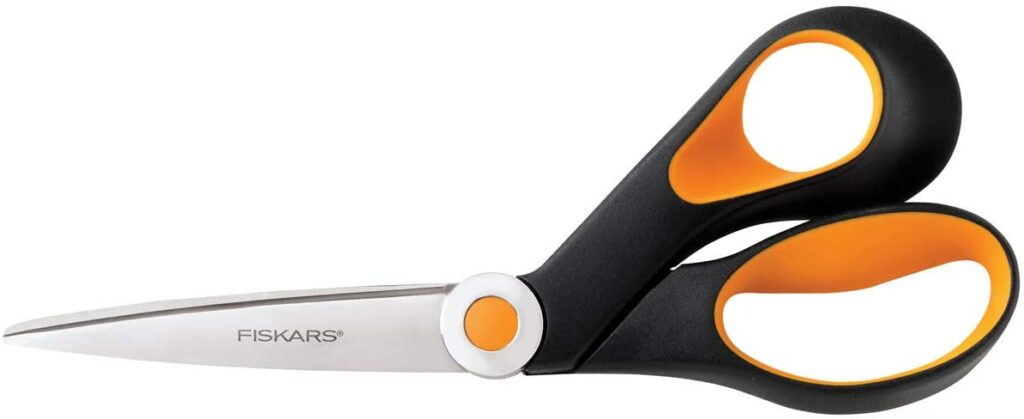
Heritage makes the Klein Tool, and they’re very sharp and move into the lead with a sharpness of 270. Very impressive. At $28. Is this Heritage brand of forged carbon steel with larger ring handles that make scissors comfortable? The Heritage brand is made in the USA.
The Heritage scissors are the heaviest yet at 215. The Heritage brand, slightly different from the Klein Tools scissors, is sharper than average at 345. At $31, this Gingher brand knife edge cuts multiple layers, double plated Chrome over nickel blade finish is striking and endurable, and versatile shearers offer long precision ground knife edge blades to cut multiple layers of fabric to the tip.
The Gingher scissors are made in Italy. The Gingher scissors weigh 171 grams. The Gingher brand is very sharp and takes the lead from the Klein Tools brand with a sharpness of 245.
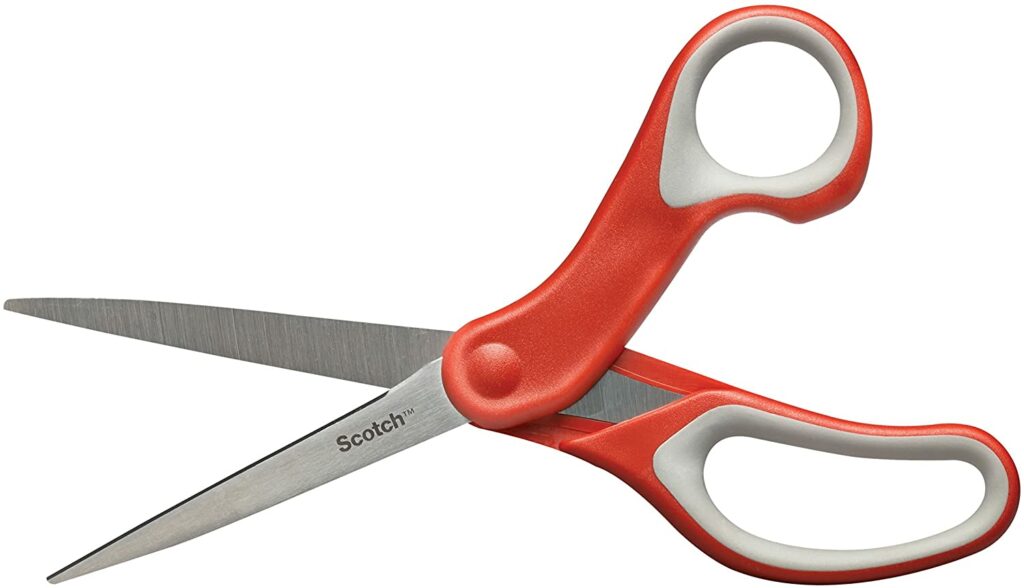
And the most expensive brand will be tested at $73 and is made with a KAI grip elastomer finish that causes less fatigue and prolonged use of high carbon stainless steel blades, excellent balance for fatigue, free cutting, smooth lightweight, and cutting action.
The KAI scissors are made in Japan. The KAI is the heaviest yet at 254 grams. The Japanese KAI scissors are expensive and the sharpest in the lineup at 220. So the KAI is very sharp. At 220, Gingher is nearly sharp at 245, Klein tools 270, Heritage 345, and Fiskars 355.
I’ve always been told that cutting paper with scissors will cause them to be dolls. So, I will make 1000 cuts across a standard sheet of paper for three football fields for each brand, beginning with the Stanley brand. This is a terrible idea.
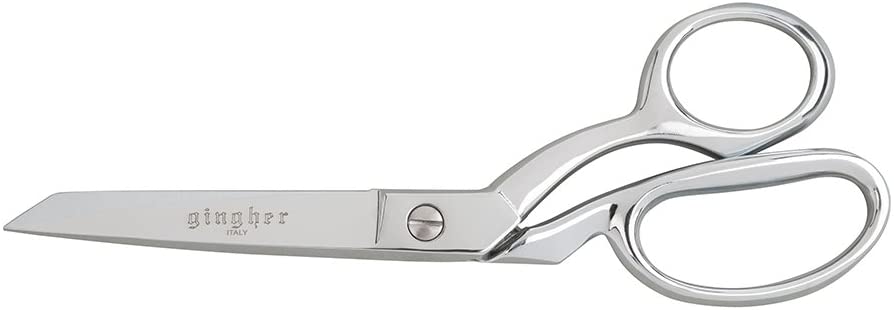
One brand down in 14 to go. The Stanley brand started at 610, and the paper caused quite a bit of sharpness loss, 1015. It’s straightforward to tell that the Scotch is quite a bit sharper than the Stanley. However, the comfort of the scissors is about the same, and the Scotch performs quite a bit better than the Stanley, with a sharpness of 545.
These use in the comfort of the Singer brand seem to be about the same as the Stanley, the Scotch, and the Singer brand performed nearly as well as the Scotch at 570 and moves into the second position.
The KitchenAid scissors are the most comfortable yet, and the KitchenAid held up the best yet and moved into the lead with a sharpness of 515. The Livingo scissors are more comfortable than the KitchenAid. However, the Livingo is the sharpest yet at 440.
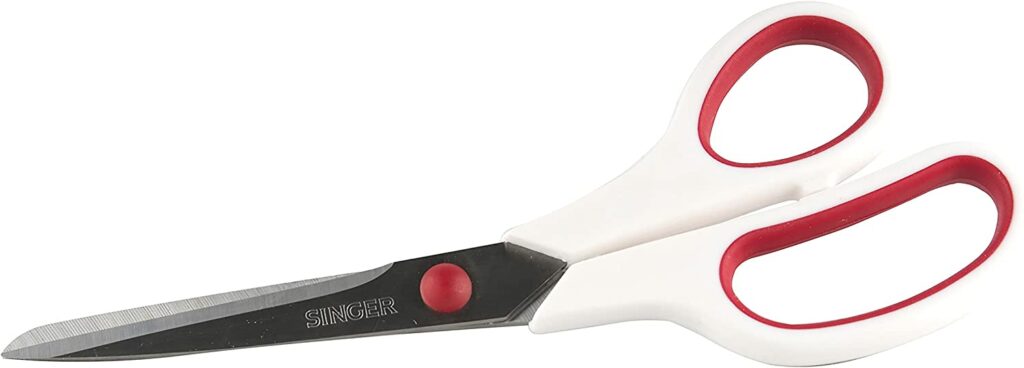
Unfortunately, the Westcott scissors are just not very comfortable to use. I didn’t think I’d survive making a thousand cuts, 525 sharpness for the Westcott. The Acme scissors are much more comfortable than the Westcott. They didn’t start very sharp at 575 but didn’t dull much either at 595.
The comfort of the Ultima seemed to be about the same as the Acme, and the Ultima’s moved into a two-way tie for first place. With this sharpness of 440, the Bianco scissors offer better leverage than most other brands.
The Biancos are sharper than average, with a sharpness of 485. The Fiskars are the most comfortable scissors yet. And they’re also the sharpest in moving into the lead, with a sharpness of 400.
The German-made Henckels are also very comfortable to use, and the Henckels held up well and are sharper than average, with a sharpness of 460.
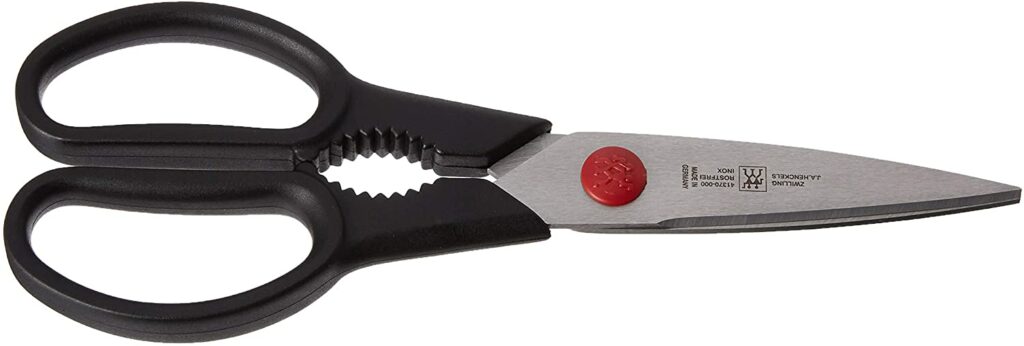
And the Klein tools move into the lead of the Fiskars with a sharpness of 320. And after cutting through the paper a thousand times, the Heritage is still very sharp at 410.
And the Gingher brand moves into first place with a sharpness of 310. The KAI is very comfortable and easy to use, and the KAI remains incredibly sharp and moves in the first place with a sharpness of 290. After each brand made a thousand paper cuts, the KAI is the sharpest at 290.
The Gingher is nearly sharp at 310, Klein tools 320, Fiskars 400, and Heritage 410. Comfort and ease of use are highly subjective. Whoever the Fiskars and the KAI seem to be the most comfortable with the rating of one, quite a few other brands perform very well with a rating of two.
I use scissors all the time to cut packaging, which is often made of cardboard.
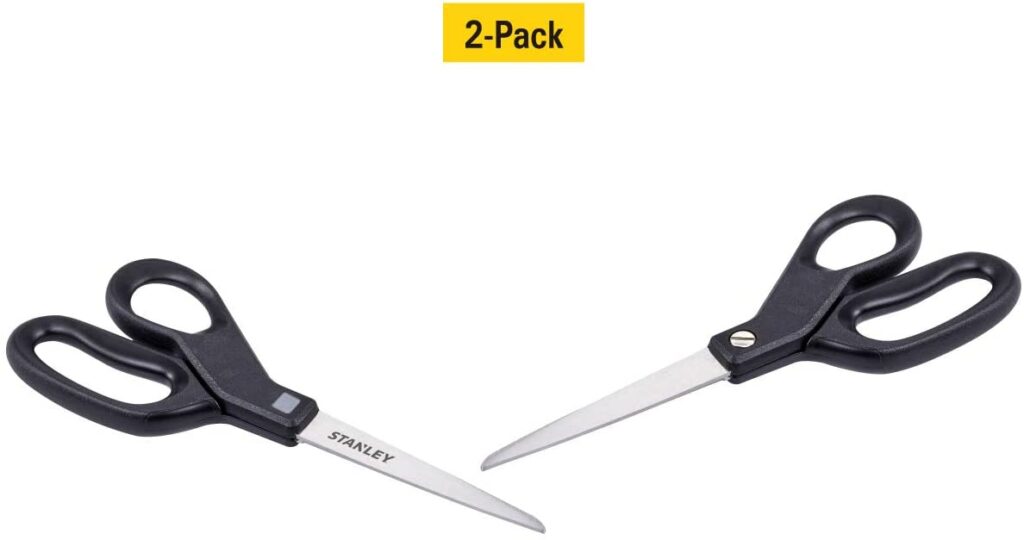
So let’s see how well the scissors hold up after making 20 passes. And the Stanley is very dull and took about three minutes to make 20 passes through the cardboard.
The Stanley’s are dull at 1,015, and they lost a little bit more sharpness at 1075; the Scotch scissors are noticeably sharper than the Stanley’s, but it took over two and a half minutes to make 20 cuts.
They experienced a little bit of sharpness loss from 545 to 585. And a Singer brand is the fastest yet at just over a minute and a half to make 20 cuts. The sharpness of the Singers went from 570 to 700, and the KitchenAid is quite a bit easier and faster than the first three brands at only 85 seconds.
The KitchenAid is still pretty sharp at 585. The same as the Scotch, the Livingo scissors are very sharp.
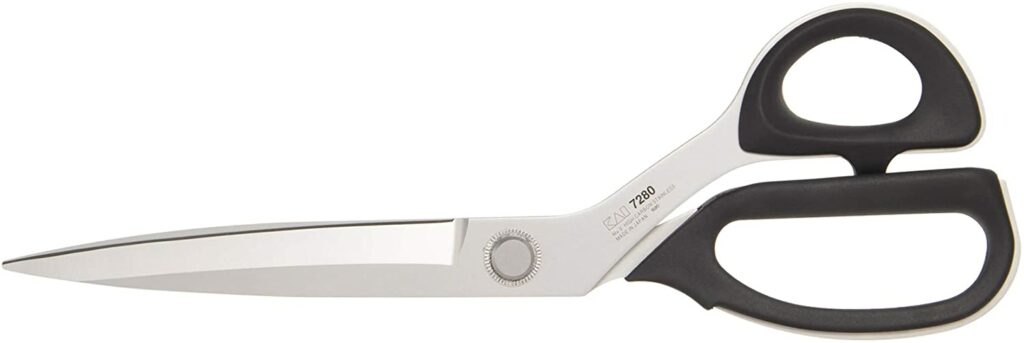
It seems to take more effort to cut the cardboard in 115 seconds. And the Livingo is pretty sharp at 520, and it took over three and a half minutes to make 20 cuts with the Westscott the Westscott aren’t quite as sharp as the Livingo at 585, and the Acme is the second fastest to make 20 cuts, at 95 seconds.
The Acme sharpness went from 595 to 675. And the Ultima Classics are very sharp but have yet to be designed to cut through thick material at 125 seconds, and the Ultima Classics of the sharpest yet at 485.
The Bianco scissors offer significant leverage and are well designed for cutting through cardboard moving into the lead at only 80 seconds, they still have plenty of sharpness at 570, and the Fiskars have easily shredded the cardboard. It is even faster than the Bianco scissors at 70 seconds. They’re also the sharpest yet at 410.
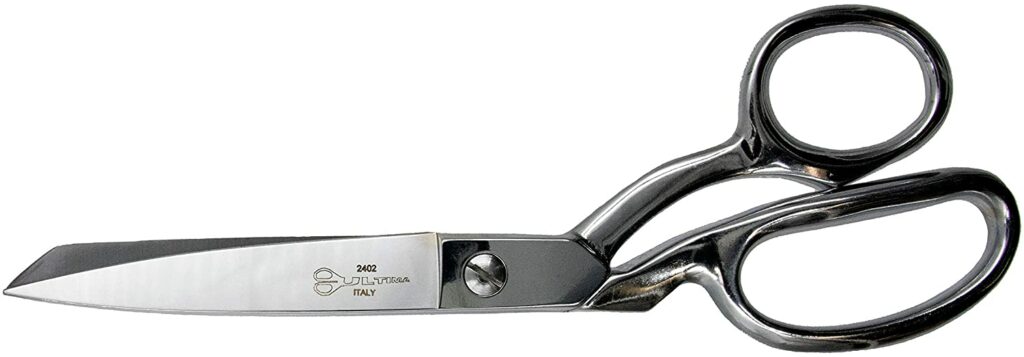
Very impressive. The Henckels are well-designed for cardboard and nearly as fast as the Fiskars at 80 seconds; the Henckels are still very sharp at 525. And Klein’s tools are very sharp.
They aren’t relatively as easy to use on heavy materials as some of the other brands, 90 seconds, and Klein tools are the second sharpest at 420. The Heritage handles differ slightly from the Klein tools, which help for 85 seconds.
The Heritage brand is nearly sharp as the Klein tools at 450; the Gingher brand performed much like the Klein tools and the Heritage brands at 85 seconds. And the Gingher brand is the sharpest yet, at 375.
And the KAI is terrific, cutting through the cardboard twice as fast as the other brands in only 43 seconds. And the KAI is also the sharpest scissors at 330. Very impressive.
After making 20 passes through the cardboard, the KAI remains the sharpest at 330 Gingher or finished second at 375 Fiskars 410 Klein tools, 420 in Heritage 450. While cutting speed is more subjective than blade sharpness. The KAI came out on top at 43 seconds, but the Fiskars performed very well at 70.
The Bianco and Henkel brands finished at 80 seconds, KitchenAid, Heritage, and Gingher at 85 seconds while cutting through thin aluminum flashing. Hone and sharpen some of the scissors, or will it dull them?
I’ll ten passes with each brand and its doll. The Stanley’s going from the sharpness of 1,075 to 1,230, cutting through the aluminum didn’t hurt the Scotch too much, losing about 5% sharpness at 630. The Singer brand takes less effort than the Stanley in the Scotch.
The sharpness of the Singer brand stayed nearly the same as before at 685; the KitchenAid made straightforward work with aluminum.

It lost about the same sharpness as the Scotch scissors, 635. The Livingo scissors are sharp but not as easy to use as the KitchenAid. They lost about 5% of their sharpness, 555.
The Westscott scissors take more effort than the other brands. However, they did alright. As far as sharpness going from 585 to 610, the Acme brand made easy work of the aluminum, and the sharpness loss is minimal going from 675 to 705.
The Ultima classic scissors are very sharp, and they made easy work of the aluminum. They remain very sharp, going from 485 to 510. The Bianco scissors are very well-designed and easy to use.
They experienced a minimal sharpness loss going from 570 to 590. I cut through the aluminum much faster with the Fiskars at 435. The sharpest scissors yet, the Henckel isn’t quite as sharp as the Fiskars, but they offer quite a bit of leverage.
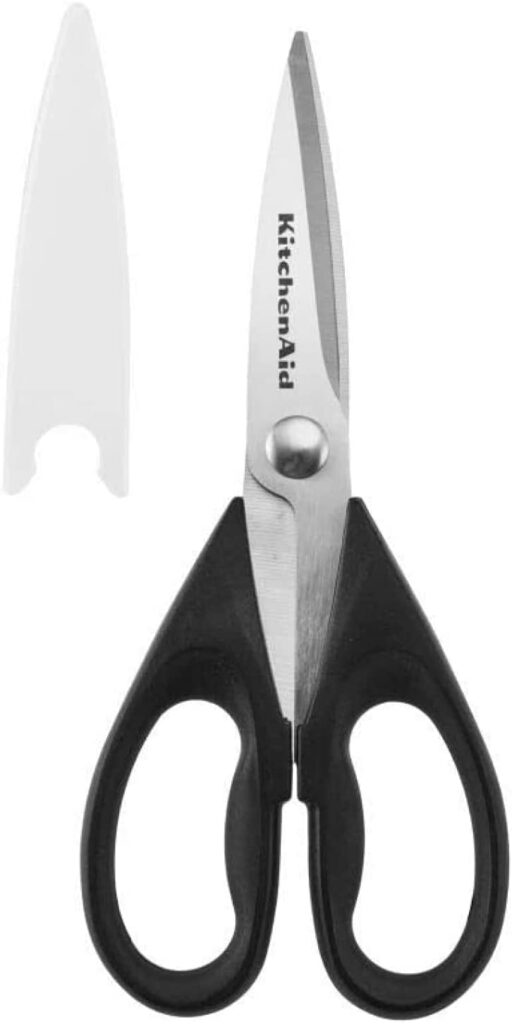
The Henckels now have a sharpness of 635. The Klein tools are very sharp and more user-friendly than the other brands. 435 is the same sharpness as the Fiskars. The Heritage scissors perform the same as the Klein tools but are not as sharp at 490.
The Gingher scissors are very sharp cutting through the aluminum didn’t hurt the sharpness. With a sharpness of 350, they move into the lead. And the KAI is very easy to use and makes straightforward work of cutting through the aluminum.
They’re also the sharpest yet at 335. So once again, the KAI came in on top with a sharpness of 335, but the Gingher wasn’t too far behind at 350—Fiskars and Klein’s tools tied for third at 435. And the Heritage finished in fifth at 490 abrasion resistance is a factor to consider.
And we’re going to test that next, cutting through some sandpaper and folding the sandpaper in half so that both sides of the blade make contact with the 400-grit media for ten passes.
And the Stanley did experience an additional 13% sharpness loss from the sandpaper and dropped the 1,650. And the sandpaper took a significant toll on the Scotch scissors and went from 630 to 1,175.
The Singer brand also experienced a significant sharpness loss from 685 to 1,240. The KitchenAid brand has performed very well but unfortunately experienced quite a bit of sharpness loss from 635 to 1,270. The Livingo isn’t as easy to use as the KitchenAid, but they are sharper at 1000, and the Westscott brand held an edge very well.
And they’re the sharpest yet at 780; the Acme scissors started at 705 and did quite a bit to 1,190. The Ultima classics performed better than average, finishing with a sharpness of 945 to move into the second position. After cutting through the sandpaper, the Bianco scissors have a sharpness of 1,235.
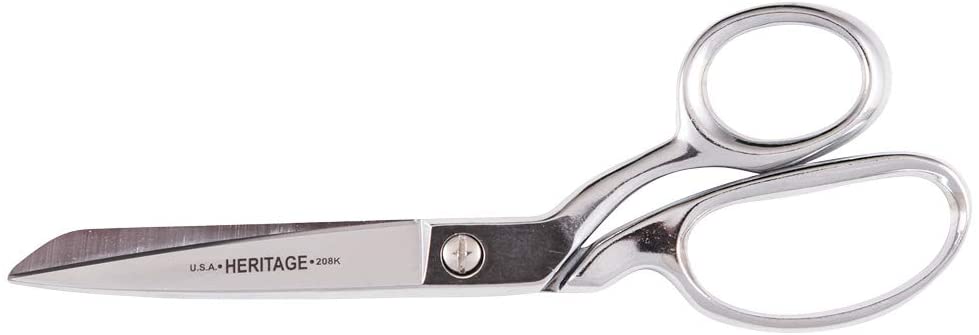
The Fiskars started the showdown as one of the sharpest brands, and they finished extremely strong with a sharpness of 725 to take the lead from Westscott. Henckels perform nearly as well as the Fiskars with a final sharpness of 770.
The Klein tools have been made of high-quality steel and finish the showdown at 645 to move into the first position. The Heritage brand also performed much better than average, finishing with a sharpness of 730. The Gingher of the brand started as the second sharpest, and they remained very sharp after the final test at 550.
The KAI is the best in the lineup but also costly. They’re also still very sharp at 460. So after a thousand passes through paper, 20 passes through cardboard, ten passes through aluminum, and ten passes through sandpaper.
The KAI came out on top with a sharpness of 460 Gingher also finished in second place at 550, Klein tools at 645, Fiskars 725 and Heritage 730, and a Scotch brand is exceptionally dull, and they’re too dull to push cut through paper.
There are several ways to sharpen scissors, but one of the easiest ways is to use a flat sharpening stone to make things easier. I just took the scissors apart. If you roll the scissors from side to side, you can fill the flat edge of the scissors; pushing the blade across the stone so that the burrs are on the inside edge helps.
The edge is relatively sharper after about a minute of sharpening, and a Scotch brand started at 1,17ter the sandpaper. And now they’re at 575.

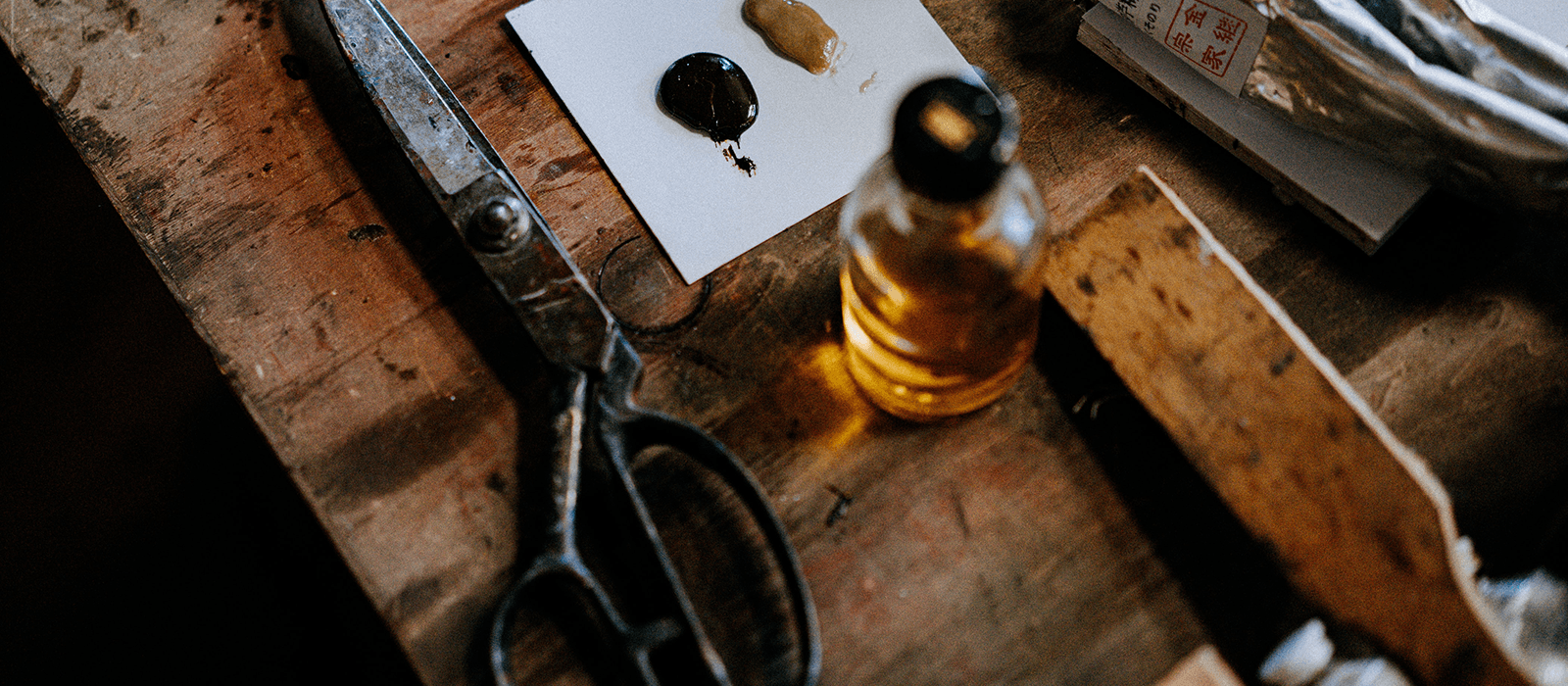
Leave a Reply